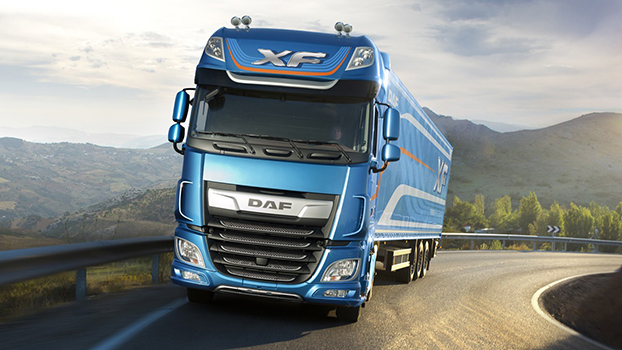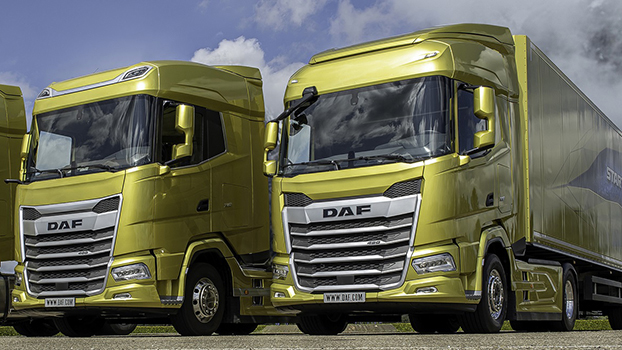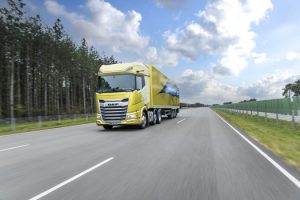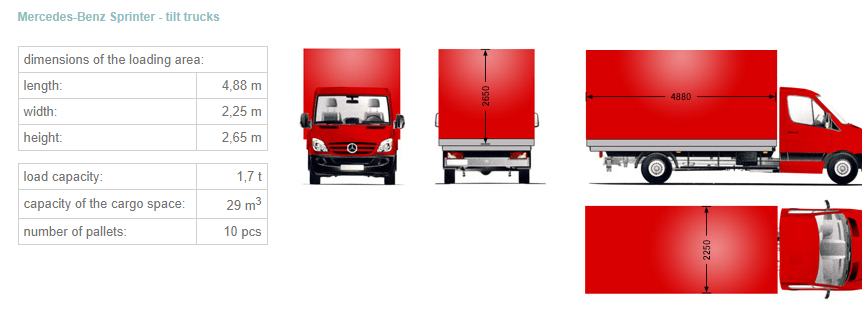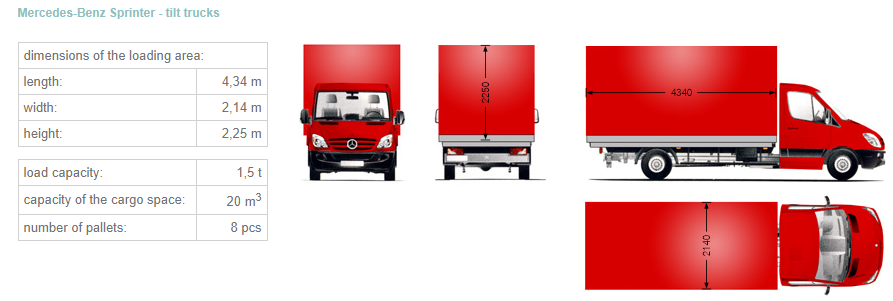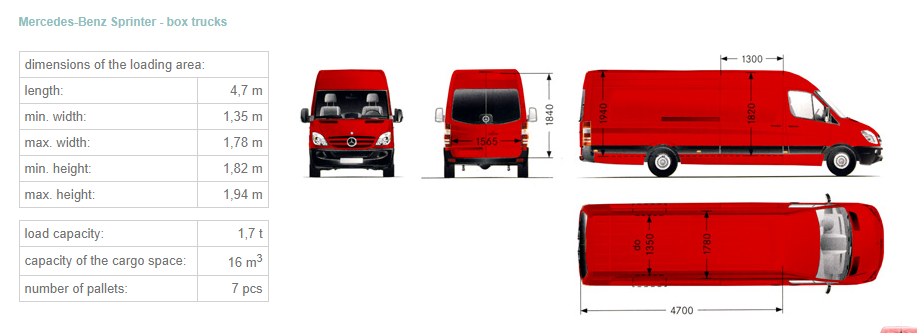How to Calculate the Capacity of a Truck

How many pallets will fit on the road space of their truck? This is an ever-topical question that is familiar to car and cargo owners, logistics management, and loaders. The truck capacity is an important characteristic that has a greater effect on the overall efficiency of the entire system of goods transportation.
You may believe that you can always find this information in your owner’s guide. Not really. You can find the actual load capacity of your vehicle. And this will give you not so much understanding on a number of pallets or crates that is suitable for this very lorry. So is it possible to have more accurate calculation on your 10 wheeler truck load capacity or 7.5 tonne lorry carrying capacity? Of course, you can do some math weighing the front steering axles or measuring the wheel base but sometimes there are much easier ways to find an answer. Let’s try to clear the things up.
Types of Trucks
Total freight solutions are able to hold different number of pallets, boxes, or containers. Look at this table and find your own one.
| Type | Description | Cargo Weight |
| Semi-trailer | The most common type that can transport the majority of goods. | 20-25 tons |
| Semi-fridge | It is ideal for transporting goods that require special temperature conditions. | 12-22 tons |
| Combination vehicle | It consists of a prime mover and trailers. | 16-25 tons |
| Isotherm | It is designed to protect the goods against weather and instability of the temperature. | 3-25 tons |
| “Jumbo” | This is a special large type of high capacity trucks’ trailer. | up to 20 tons |
Have you found your transport there? So the work is half-done.
The Ideal Number of Pallets for Any Type of Trucks
The cargo carrier owners often ask questions like “What is the 26 tonne lorry pallet capacity?” or “What is 18 tonne lorry cubic capacity measured in pallets?” First, we need to determine exactly what we mean by a “pallet.” We suppose that it’s better to speak about a European pallet (Euro-pallet) as one of the most popular packing used for storage and transportation. Its dimensions are 1,200 mm × 800 mm × 144 mm and its safe working load is 1,500 kg. This is not the only standard Euro-pallet that is used in European countries, there are at least three other variants that are also standard, but let’s stick to this size to avoid misunderstandings.
According to the vehicle types mentioned above, you can definitely get an ideal number of pallets using this table:
| Type | Number of euro-pallets |
| Semi-trailer | 22-33 |
| Refrigerator | 24-33 |
| Combination vehicle | 22-33 |
| Isotherm | 6-33 |
| “Jumbo” | 33 |
Being aware of your vehicle type, you can calculate the number of packaging that can be out into it. For example, if you take away the tent and frame of the Eurotent, it is possible to use the wagon as an open platform (35-50 сm boards’ height) for loading pallets. By the standard, 2 europallets must fit across the width with the length 120 cm in truck.
Mind that this is all about the pallets that are not stacked. The number of stacked pallets depends on the height of the items that are placed into them. If you want the pallets to be stacked, calculate the double height of the pallet with the goods and compare it with the maximum height of the loaded space. Pay attention that if the goods in the pallets peek out, you may fail to place all of them in the cargo space.
If you are going to meet the freight demand in the USA, don’t forget that they have a bit different standard. The most common in North America pallet’s size is 48” x 40” (1219 × 1016 mm), making up over 30% of all pallets in the United States. Have a look at this table if you are interested in the transportation in the USA:
| Truck or Trailer size | Number of Pallets (48” x 40”) |
| 53 foot trailer | 30 |
| 48 foot trailer | 24 |
| 45 foot cube container | 24-26 |
| 40 foot container | 20 |
| 24 foot truck | 12 |
| 16 foot box truck | 6 |
Some Words about Containers
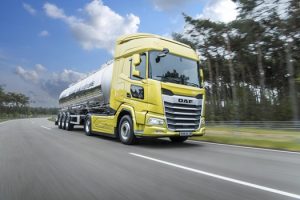
But let’s talk about containers. They are popular for all types of transportation, especially by sea. The standardized 20 and 40-feet large containers can carry most types of dry cargo packed in other packaging like boxes, pallets, sacks, barrels, etc. Standard container dimensions are like these:
| Measure | 20ft | 40ft |
| Length | 5.9m / 19.4ft | 12.03m / 39.5ft |
| Width | 2.35m / 7.8ft | 2.4m / 7.9ft |
| Height | 2.39m / 7.9ft | 2.39m / 7.9ft |
| Payload capacity | 25,000 kg / 55,126.9 lbs | 27,600kg / 61,200 lbs |
How many pallets can be disposed in a sea container? This is an easy question, just look here:
| Loaded sea container | Number of pallets |
| 20ft container | 11 |
| 40ft container | 24-25 |
By the way, cars are also often delivered in containers. A small side note: 2-4 mid-size cars can be appropriately accommodated in a 40-foot container.
Why Should You Avoid Overloading?
We had such a long talk about the maximum number of cargo items that can be loaded into the vehicle. But why is it so important and why shouldn’t you put more pallets into the trailer? Does your 12 wheeler truck capacity in tons matter when you want to transport more goods at a time?
No doubt, it matters, consequences are costly. It is all about safety: if your cargo is not within your truck’s carrying limits, you could have problems with your vehicle and reduce equipment life. Drivetrain components, tires, engine can be damaged and become prematurely worn-out by operating above design tolerances.
It is also possible to hurt other drivers and pedestrians by causing accidents and crashes on the road. The overloaded trucks with too much cargo have undue strain on the axles and mechanical components of the truck, making it much more difficult to control. They can simply flip over.
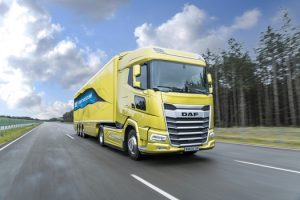
Some Stats for the Most Interested
To be sure you have all necessary information and are ready to work with any transport of any sizes, characteristics, and dimensions. Here is a table with the basic characteristics of some of the most demanded vehicles:
| Type of trucks | Length, m | Width, m | Height, m | Volume, m³ | Tonnage, t |
| Large trucks | 3.5- 4 | 2-2.3 | 2.45 | 14-21 | 5 |
| 10-ton crane tilt | 5.0 — 8.0 | 2.4-2.5 | 1.8 — 3.0 | 25-60 | 5-15 |
| 10-ton crane thermal | 5.0-8.0 | 2.4 — 2.5 | 1.8-3.0 | 25-60 | 5-15 |
| 20-tonner with isotherm semitrailer | 13.6 | 2.45 | 2.45 | 82 | 20-25 |
| 20-tonner refrigerator | 13.6 | 2.45 | 2.45 | 82 | 20-25 |
| Eurotent | 13.6 | 2.45 | 2.45 | 82 | 20-22 |
TAGS: #Ecology #Logistics #Mobile Truck Wash #RPC crates #RPC Washing #Transport

